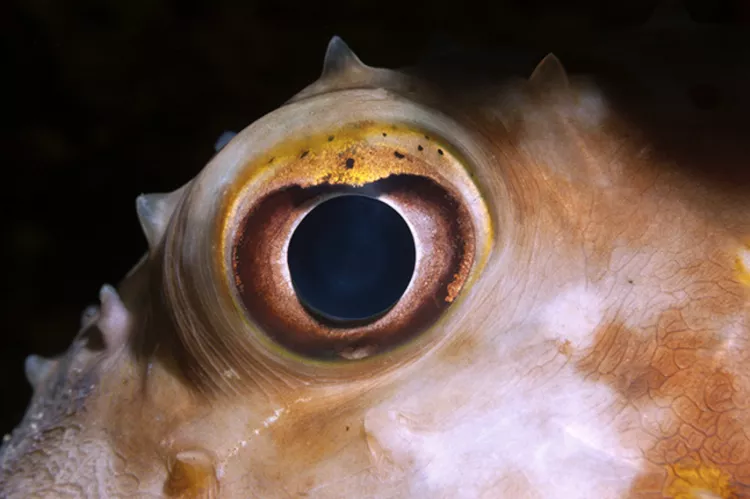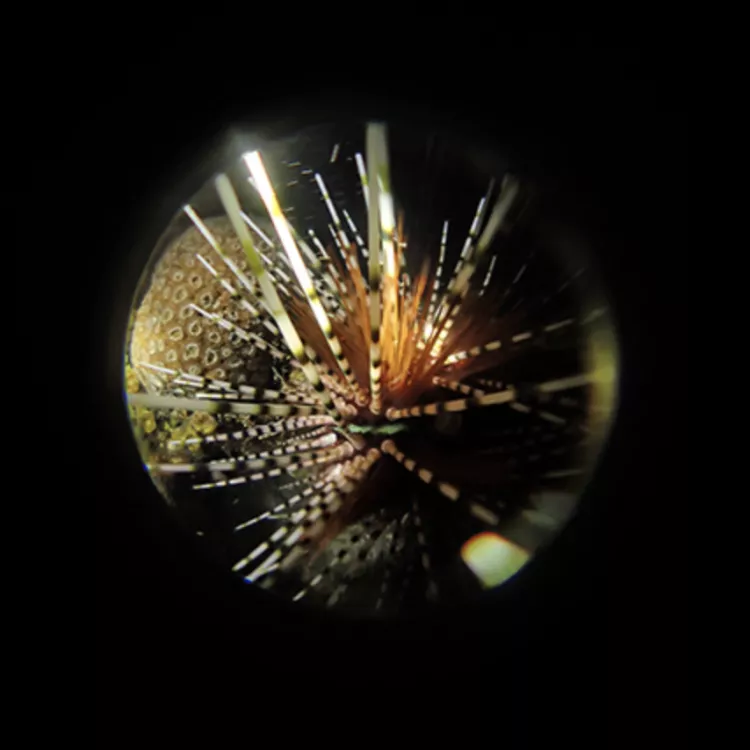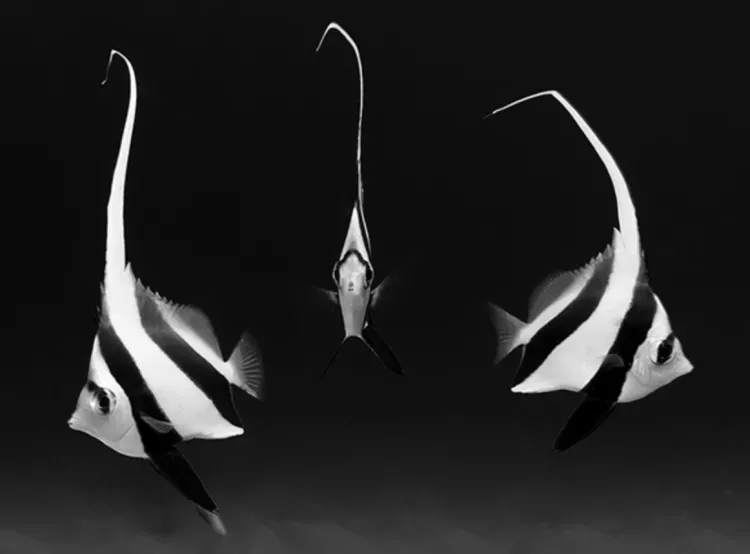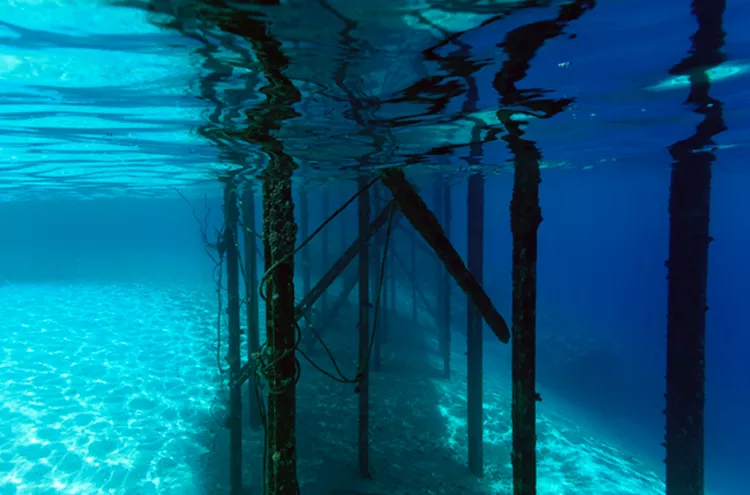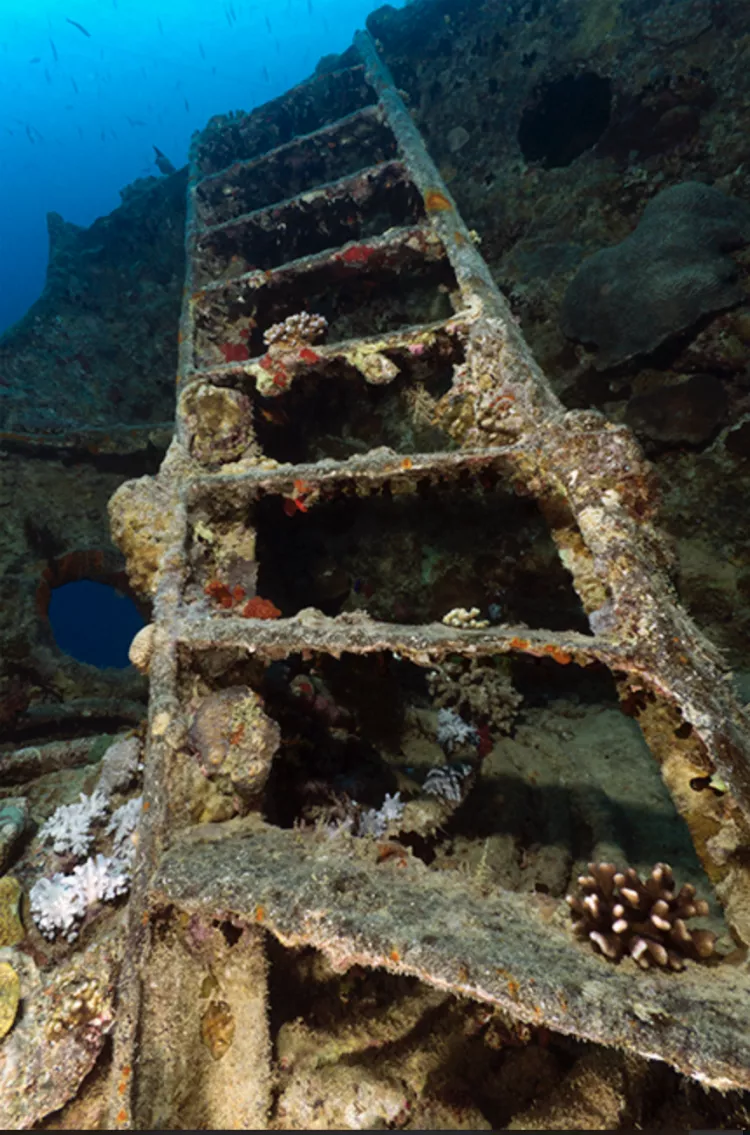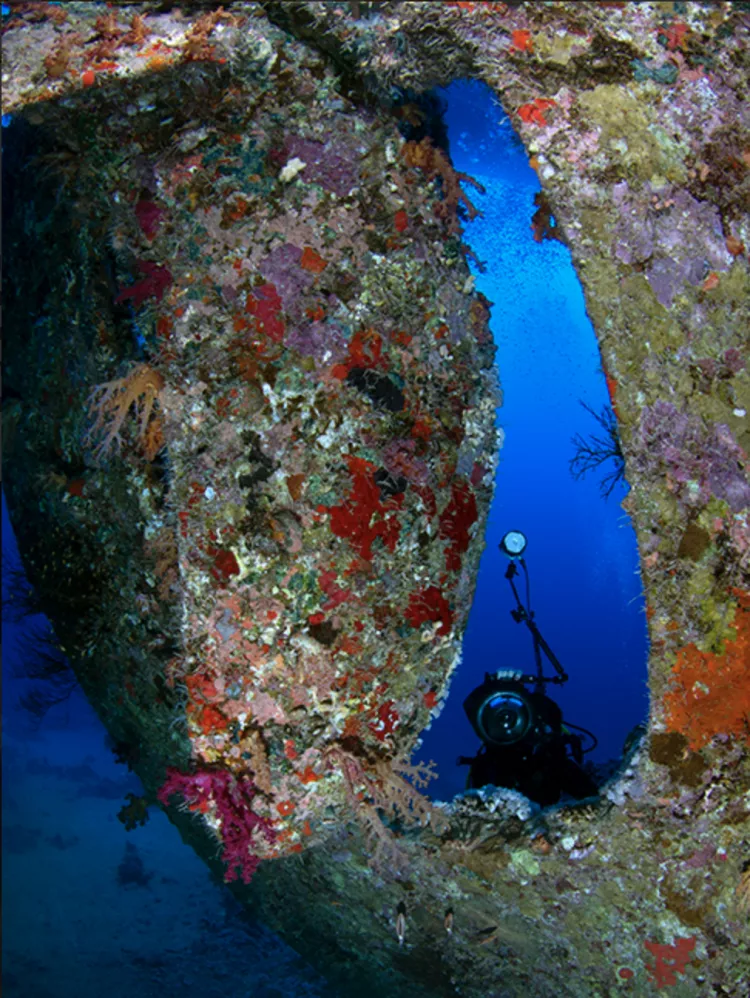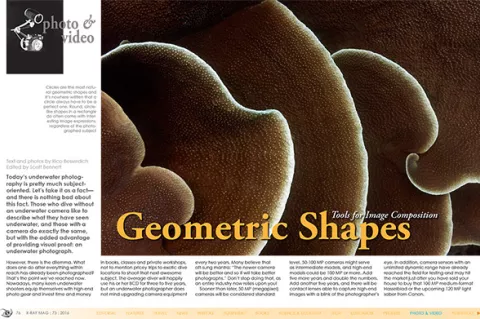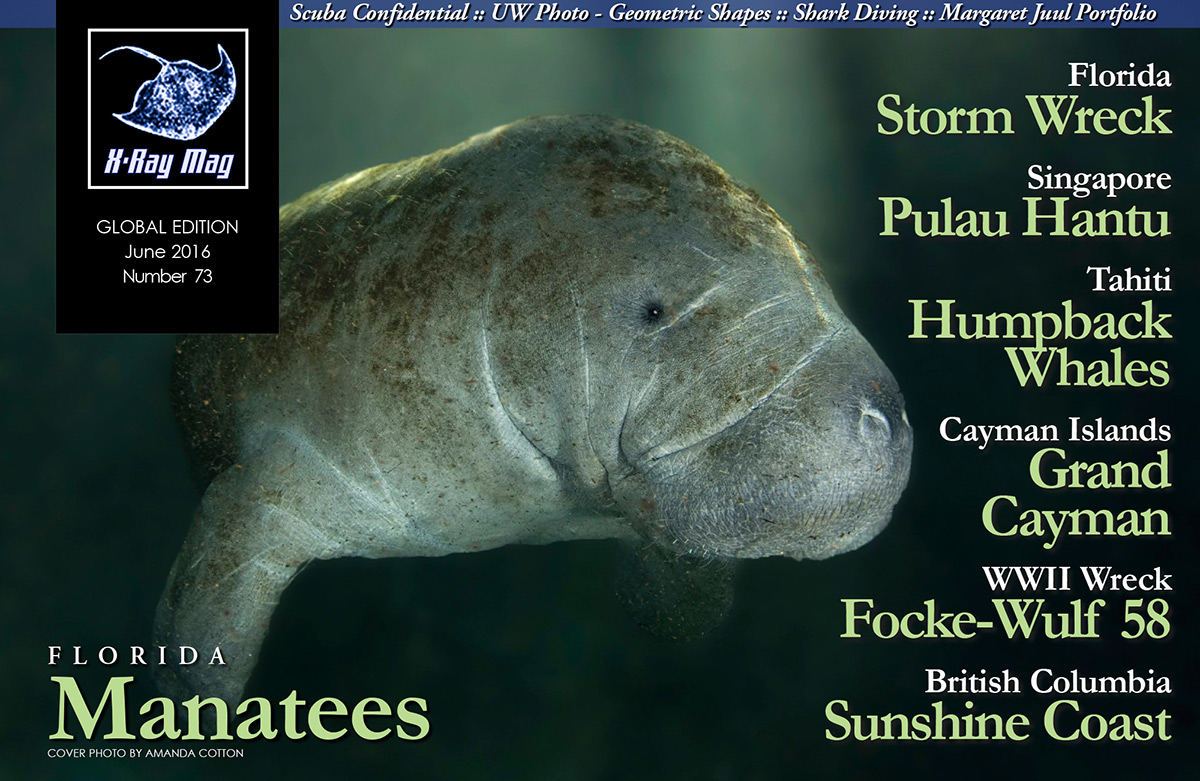Today’s underwater photography is pretty much subject-oriented. Let’s take it as a fact—and there is nothing bad about this fact. Those who dive without an underwater camera like to describe what they have seen underwater, and those with a camera do exactly the same, but with the added advantage of providing visual proof: an underwater photograph.
Contributed by
However, there is the dilemma. What does one do after everything within reach has already been photographed? That’s the point we’ve reached now. Nowadays, many keen underwater shooters equip themselves with high-end photo gear and invest time and money in books, classes and private workshops, not to to mention pricey trips to exotic dive locations to shoot that next awesome subject. The average diver will happily use his or her BCD for three to five years, but an underwater photographer does not mind upgrading camera equipment every two years. Many believe that oft-sung mantra: “The newer camera will be better and so it will take better photographs.” Stop doing that, as an entire industry now relies upon you!
Sooner than later, 50 MP (megapixel) cameras will be considered standard level, 50-100 MP cameras might serve as intermediate models, and high-end models could be 100 MP or more. Add five more years and double the numbers. Add another five years, and there will be contact lenses able to capture high-end images with a blink of the photographer’s eye. In addition, camera sensors with an unlimited dynamic range have already reached the field for testing and may hit the market just after you have sold your house to buy that 100 MP medium-format Hasselblad or the upcoming 120 MP light saber from Canon.
Basic principles
However, that does not automatically guarantee you will shoot better images. If you do not want to sell your house for a better camera but are still keen on improving your underwater photography, I have some good news for you.
The basic technical principles of photography have not changed for the last 125 years. First is the need for a light sensitive material (i.e. film—in the past analog age—and nowadays, the digital sensor); second is the need for a device to control how much light hits that light-sensitive material (i.e. the aperture); and third is the need to control how long the light hits the light-sensitive material (i.e. the shutter speed). Add a special feature, the sensitivity of that light-sensitive material (ASA aka ISO), and that is basically it.
Whether upcoming generations of digital cameras are capable of making a long distance call to ET’s relatives, make you a cappuccino underwater or text your darling that you will be late for dinner while simultaneously combining 25 multiple exposures, every camera works according to the above-listed basic principles. Simple.
Technical quality
It would be a bit single-minded to judge any image by technical quality alone. Let me give you an example: One of the most expensive photographs in the world is “Rhein II” by German photographer Andreas Gursky, which sold for US$ 4.3 million. In social media (considering the image would be still unknown by now), this image would barely gather ten likes. In comparison to the capabilities of today’s modern cameras, it is not even a technically outstanding image. It has some mistakes and has been manipulated, with several image elements removed during darkroom processing. (Don’t think for a second that image manipulation is a digital age curse; it has been around as long as photography has existed).
Then again, who needs Likes and pixel analysis if one can make millions of almighty dollars? Incidentally, “Rhein II” uses geometry as its main compositional element, so keep reading as I will come to the point shortly.
Back to basics
In photography, there is no need for “always faster, always better, always fancier.” The key to good photography does not rely on always looking forward, always striving for the best and newest or for special effects realized with special equipment. It might actually rely on looking back. Yes. Looking back means to go back and look at the basics that can make a photograph of any subject look great and impressive. I said ‘‘great and impressive”, not successful, in terms of profit. If it’s money you seek, go and shoot weddings.
Whether or not you can afford high-tech equipment, or travel to exotic locations, it in no way limits your options for underwater photographic expression. So, let’s go back to the basics and back to geometry, specifically—especially to geometric shapes. Geometry? Shapes? Relax, everything will be just fine!
Understanding geometry
To understand how geometry and geometric shapes can improve your underwater photography, it is a good idea to first understand what geometry actually means. According to Wikipedia, “A geometric shape is the geometric information which remains when location, scale, orientation and reflection are removed from the description of a geometric object.”
Oh dear, it’s getting scientific now! Let’s get even more basic. There are only three geometric shapes in existence: the rectangle, the circle and the triangle. Any other geometric shapes are just variations or combinations of one or more of the former. See? In the end, it is all very simple. It is even more simple in the art of photography, as we only have to deal with two dimensions. Now let’s check out how we can use those three geometric shapes in our underwater photography.
The rectangle
As long as it does not morph into a circle or triangle, the rectangle can be whatever shape it likes. Length of sides, straight or diagonal, it does not matter. A rectangle has four corners. Period. Fancy geometric shapes like octagons or hexagons are a combination of rectangles and triangles.
The most obvious rectangle we have to deal with in photography is the frame itself. Whether it is a 3:2, 4:3 or 16:9 ratio, the image frame is the most basic geometric element of image composition, defining where our image begins and where it ends. Even the very simple rule of thirds would not work without a rectangular frame.
Seven rectangles are present in the super-expensive “Rhein II” photograph, which I mentioned earlier. The entire image consists of only rectangles, which makes it a masterpiece. If you count them, you will find six, but don’t forget the image frame itself is a rectangle, which makes it seven.
Within the pre-given rectangle of the frame, you can position or compose all other elements of your shot just as you like. Following the rule of thirds, or the golden spiral, always works. However, it is always best to see your image frame as part of the composition.
Be it rectangles, triangles or circles, take it as a rule that two in each image are enough. Although there can be exceptions, viewers perceive an image including all three geometrical shapes as pleasing. Keeping it simple is the key. To work with just one or two geometric shapes in a photograph is usually enough.
Rectangles might find their place in wreck shots or shots of anything artificial in the underwater world. In most cases, the good ol’ frame-in-a-frame (or window-in-a-window) concept actually works with rectangles. One frame is the image frame itself, the second is a rectangle in the image itself. Note: The second element (or window) could be the shape of a circle or triangle as well, but you might also want to think of fine art prints that come with a mat board or passepartoot. Whether framed or not, it is the same thing—combination of rectangles—and it always works.
An underwater image solely consisting of rectangles (such as that million dollar baby, “Rhein II”) might not be that easy to realize. But if it was easy, everyone would do it, right? So, the task remains open. Just think about it, especially if you want your work to be appreciated by not only other photographers but fine art photography specialists, museum owners and art curators. It isn’t enough to shoot something beautiful underwater, as buyers in the art scene are looking for images that step beyond ordinary beauty.
The circle
Round is the world, round is the eye and round is the circle. Eye? Circle? Hmmm.
In the evolution of mankind, the circle is one of the most powerful geometric shapes of all. The sun is round. Even ancient gods were symbolized with circles. The world is round and almost everything in nature appears round. Rectangular and triangular shapes are often artificial, in many cases, created by humans. This makes the circle the most natural geometric shape we can utilize in our photography.
In underwater photography, the circle is a powerful geometric shape to play with. Sun, eyes, shipwreck portholes or the effect of a circular fisheye lens—they all work well. Just keep in mind that you will always have to deal with the rectangle of the mainframe.
The triangle
The geometric shape of the triangle has a deep meaning in human culture. It stands for many things but all of them were made by humans, not nature. But what about fish? Actually, many fish are perfect examples of triangles. Look closer. Many of them are, in one way or another, of triangular shape. Let’s remember, it does not have to be a perfect triangle with equal lengths. Any triangle shape will do as long as it has three corners, which logically makes it a triangle, correct? You now might want to look closer at the fins of a shark or any other fish. Are there triangles around? Of course, there are!
Be aware of geometric shapes and utilize them in your images. There is no need to travel far for sharks or super-special macro critters; the right subject might be waiting in the pond next door.
Underwater photography still requires learning some basics of photography itself. Geometry is one of the core elements, the subject to shoot is not. So, at your next dive with your camera, think of geometry. Add colors and other basics of image composition, and you will do just fine. In the end, only one question remains: Are you a photographer who loves to dive, or are you just someone who owns a camera? The choice is yours. ■
Rico Besserdich is a widely published German photographer, journalist and artist based in Turkey. For more information, visit: Maviphoto.com.

